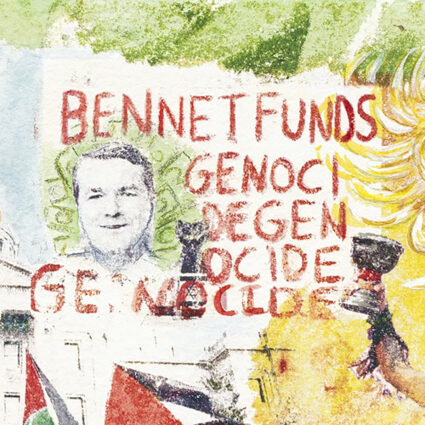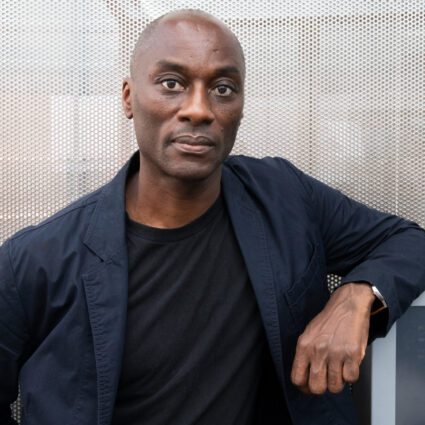Mikayla Patton works with hand-made paper, sinew, beads, and embroidery to create sculptures that continue cultural traditions while reflecting the current moment.

Roswell | mikaylapatton.com | @mikaylapatton.art
Mikayla Patton’s (Oglala Lakota) installations and works on paper are full of texture, design, metaphor, and discovery. Patton’s materials and processes are heavily influenced by her education as a youth at the Pine Ridge Reservation in North Dakota, where she learned embroidery and beading in school. She utilizes many of these traditional techniques in her contemporary practice which merge and blend to result in works that are both culturally powerful and aesthetically reflective of the current moment.
Her three-dimensional project Paper Parfleche is an interpretation and connecting thread to an object used by Plains tribes, a parfleche or traveling trunk historically used to carry important possessions. Patton first came across the parfleche when she was working in collections management during her undergraduate studies and found that these once culturally embedded objects had very little written context. In contrast, she found more than ample amounts of inaccurate and outdated anthropological texts on North American Plains tribes, which she shredded and pulped to create the hand-made paper and foundation of her parfleche. Patton’s variations are etched with shapes and patterns, stitched together with leather, and contain finely beaded motifs.
Both the laser-etched designs on the exterior and the hand-beaded motifs on the interior of the boxes are of Lakota origin and communicate power and femininity. Paper Parfleche re-engages a multi-generational legacy while transforming damaging scholarship. Patton’s concurrent works on paper prioritize the beaded elements as both cultural motifs of femininity and design components like mark-making. Patton’s hand-made paper, lane-stitched beads, and the integration of porcupine quills and grasses are lush with texture and color while championing Lakota traditional techniques. As with Paper Parfleche, Patton merges her cultural knowledge with a minimalist aesthetic in a way that makes both seem of her own invention.






